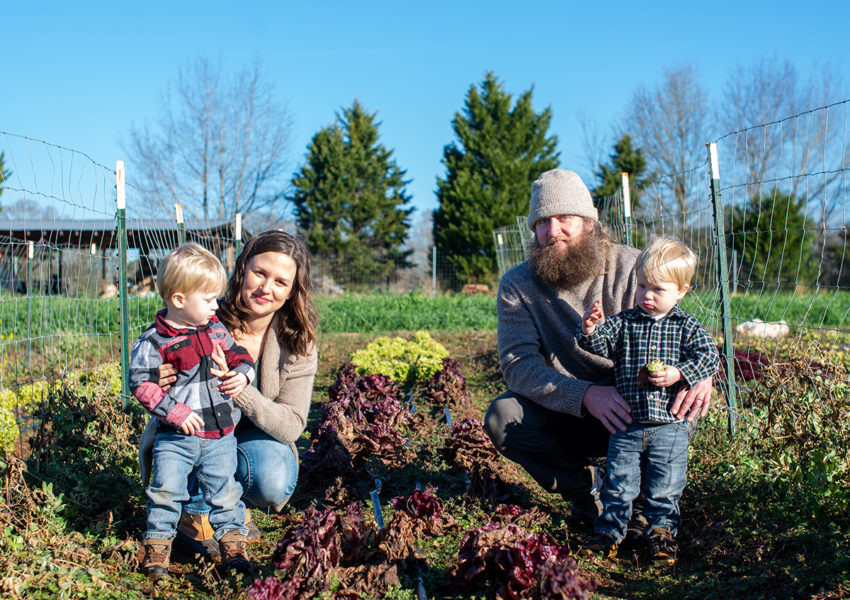Stir From the Bottom One church, one recipe, and a beloved tradition
by Tracy N. Coley
Winter clouds cast a cool, blue, Olan Mills haze on the leafless oaks that encircle the Moon’s Grove Baptist Church gym. It’s tucked into rolling Madison County farmland, northeast of Athens, Georgia. Four men sit in metal folding chairs at midcourt, straddling fifteen-gallon cast iron pots set over propane burners, stirring with the synchronicity of rowers.
![]()
Hand over hand, they grip narrow oak paddles, stirring from the bottom to keep the chicken from scorching. Each winter, they raise more than $3,000 to fund youth outings and summer camp fees. Each year, they keep alive something important that Gene Seagraves began a long while back.

Seagraves joined the mullers when he married his sweetheart, Hassie Rice, in 1955. A large-framed man who worked as a lumber salesman, he learned to cook rabbit mull from Hassie’s father, Roy Rice. For church homecomings, Seagraves cooked like Rice taught him. But he also cooked for Hassie, and she didn’t like rabbit. Sometime in the 1960s, he began cooking chicken mull for church homecomings. By the late 1960s or early 1970s, Seagraves cooked that same mull to raise money for the church. In time, his mull became the stuff of legend.

Mull traces its roots in northeast Georgia and the western Carolinas, back when most of the folks here worked on family farms. Nile Faulkner, a Madison County native who owns Butt Hutt Bar-B-Que in Athens, recalls that everybody had chickens, as well as cows for milk and butter. “All you needed was crackers. You could feed a lot of people for very little.”
By definition, mull is ground. A mull made with shredded chicken is stew, says Dwight Carey, a lifelong resident of Madison County. When he cooks mull, he follows Gene’s recipe because that’s what he knows. And because it works. “It has to be ground to distribute the flavor,” he says. “Otherwise, the chicken will fall to the bottom. That’s the secret of mull.”
Everyone knows the basic ingredients in a mull: chicken, milk, butter, broth, salt, pepper, and saltine crackers. But cooks closely guard ratios and techniques and cook times. By the 1980s, Seagraves’ mull had become so famous, and so bankable, that the church printed “Cooked by Gene Seagraves” on the tickets they sold. When Seagraves shared his recipe with another church, that didn’t sit well with the elders. “I just told ’em what was in it,” Gene said to his son-in-law and fellow mull maker Mike Burroughs at the time. “I didn’t tell them how to make it.”

Gene Seagraves died in 2011, but his recipe, with its specific ingredient list, remains sacred: hens (not chickens), Nabisco brand crackers, Blue Bonnet margarine, broth, whole milk, and a seasoning mix that might have some thyme in it. That specificity is very important. One year Seagraves allowed people to choose their own brands. The stew was off that year. People lost confidence. “From that point on, Gene said we had to use all the same ingredients,” Burroughs remembers. “Just because Ingles has Keebler crackers on sale, you couldn’t get ’em. You had to have Nabisco Premium crackers.”
Mull sounds like an old food. And it is. But this old food still draws. Burroughs remembers years when so many gathered to eat that he had to politely ask them to leave once they finished socializing.

Chicken mull sales do more than fund church needs. They give friends the chance to break crackers over hot bowls and ask the most important question of all: “How’s your mama and them?”
Moon’s Grove quickly sells out of its mull tickets each February at $8 each. Each ticket gets the holder a quart of mull, a half-sleeve of saltines, a bowl of peach cobbler, and a foam cup of sweet tea. More important, that mull connects the ticket holder to Gene Seagraves’ legacy. And to the history of this farming community where neighbors aid neighbors.
Tracy N. Coley writes about community, grief, and human resilience.




